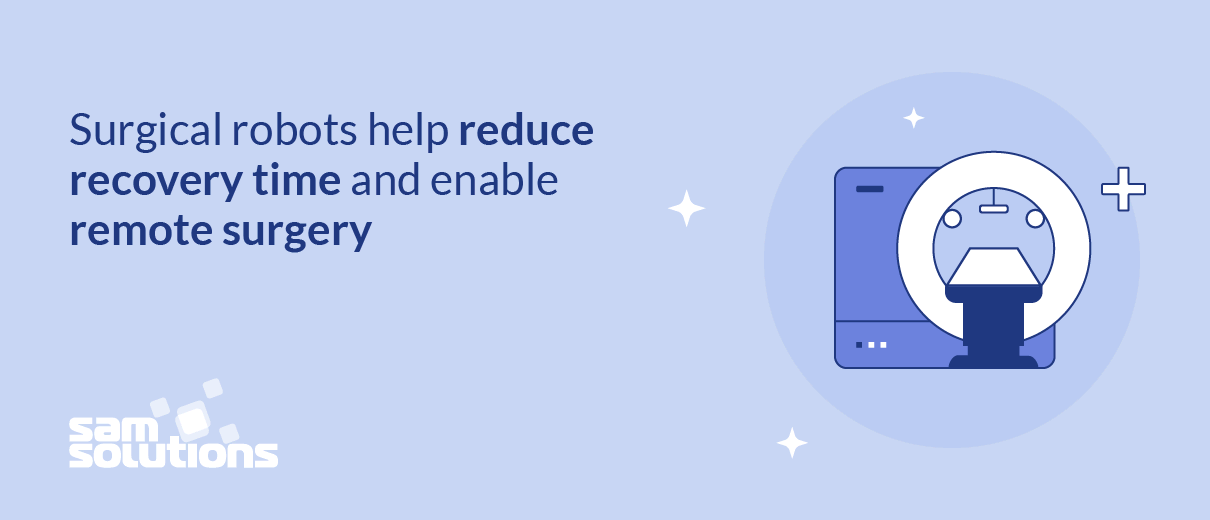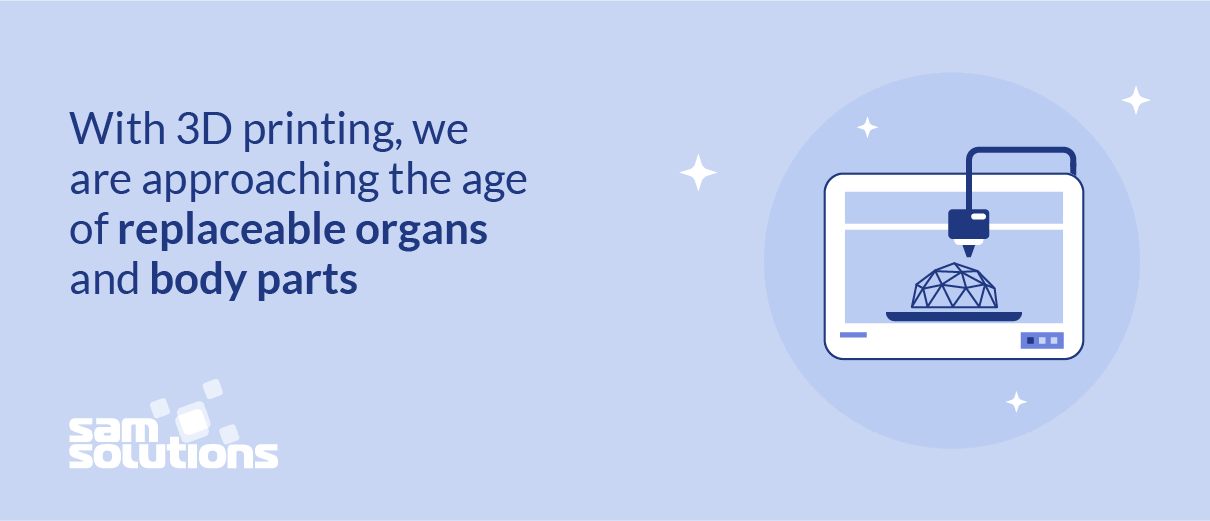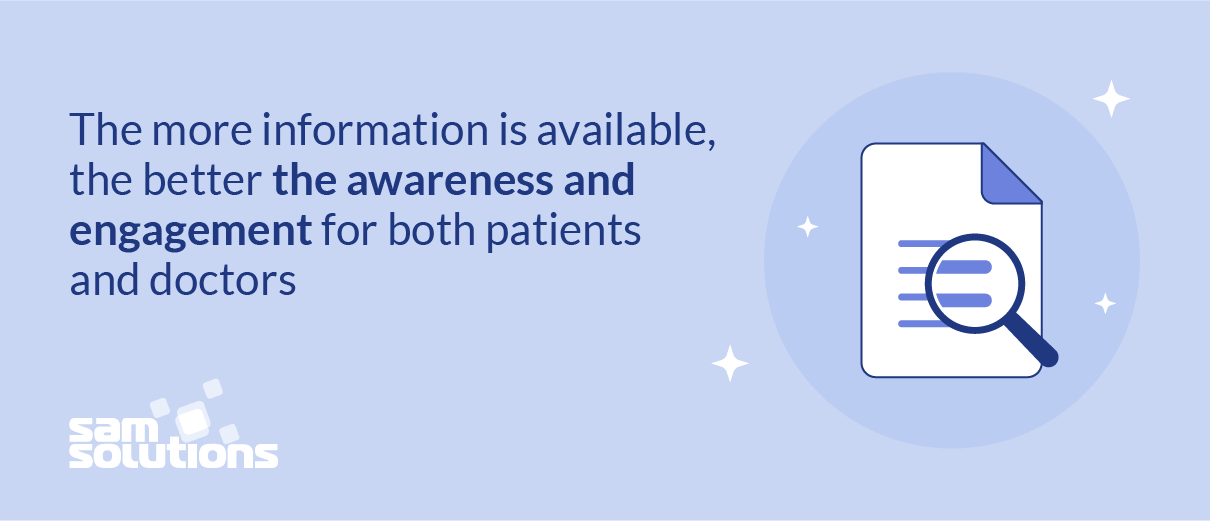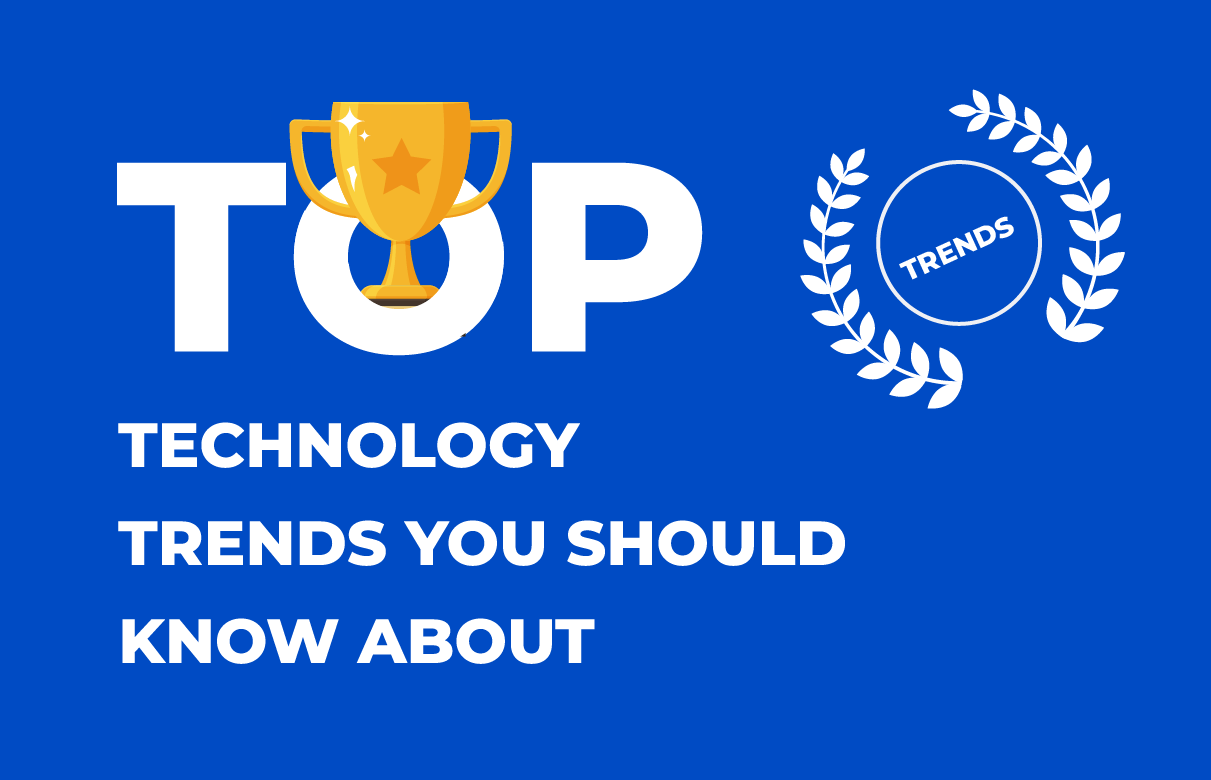The quality of health services is an important social concern. Its improvement requires the engagement and collaboration of a wide range of professionals from various spheres.
What is the most efficient way to make medical aid more available and helpful? We are convinced that it should be based on delivering information and technological support for all participants of the medical process — patients, doctors, authorities. Therefore, smart equipment engineering and software development for the healthcare industry are among the core competencies of numerous IT companies worldwide.
Digitalization of Healthcare in Figures
Currently, we are witnessing the formation of digital healthcare — the concept based on emerging medical technologies, cutting edge medical devices and custom healthcare software. Look at these statistics:
- Health information is the third most common search request on the internet
- 77 percent of patients use online sources prior to scheduling an appointment in order to learn about symptoms and treatment options, as well as to find the best doctors and treatment facilities
- 66 percent of the population is willing to use wearables and mobile apps to monitor their health and improve the treatment of conditions
- According to a report by Zion Market Research, the global mobile health (mHealth) market size, valued at $11.47 billion in 2014, is predicted to reach $102.43 billion by 2022
This proves that online information, communication technologies and mobile devices have great potential to provide high-quality medical services and increase their availability.
Digital Ecosystem of Medical Help

Information technology and equipment innovations in healthcare reshape the whole industry: integrating into our daily activities, they allow the delivery of medical care beyond hospitals and clinics. The key point is that we spend less time in hospitals, but instead are able to engage in health awareness, care and treatment in our homes or at our workplaces.
In-Hospital
In modern hospitals, the adoption of digital healthcare solutions is driven by cost-efficiency, high-quality performance and, consequently, the ability to save more lives. Operating rooms have become smart due to the equipment with connected devices and robotic surgery machines. In cooperation with medical practitioners, they prevent the deterioration of patients’ health conditions and speed up the healing process, thus dramatically enhancing the quality of treatment.
Real-Time Location Systems (RTLS) or wireless monitoring systems are integrated into hospital processes to provide continuous indoor tracking of patients, staff and medical equipment. Such systems are able to collect and analyze data, control assets and warn executives of alarming situations.
In-Clinic
Medical software is in high demand for clinics. Electronic medical records (EMR) or electronic health record (EHR) systems — digital versions of medical charts — contain patients’ full medical and treatment history. Practitioners have any-time and any-place access to these digital health records, which helps examine patients at the office significantly faster and with more accuracy.
Doctors also use various health applications for checking prescriptions, discussing controversial issues with other experts and for educational purposes. In addition, clinics are equipped with a set of handheld devices such as blood pressure monitors, portable ECG monitors, glucose monitoring systems, labs-on-a-chip, etc., which serve as assistants for quick and accurate diagnostics.
In-Home
Technology encourages people to increase their health awareness outside the clinic, as it is easier to prevent a problem than to treat it. Even staying at home, you can control your body conditions, perform some actions (in case of limited abilities), find the necessary information and get the consultation with the help of:
- Home medical devices (e.g. automated insulin pumps)
- Digital assistants
- Health applications for patients
- Telemedicine
Remote and virtual healthcare is especially vital for people with chronic diseases, as it’s less painful and more convenient for them to perform some procedures at home away from hospitals.
On-Body
Wherever you are, at home, at work or out, wearables continuously track your physical activity and habits, and monitor your health status. Activity trackers, mobile sports applications, smartwatches and other IoT connected solutions perform two functions:
- Keep an eye on lifestyle habits for the sake of interest or entertainment
- Monitor health status for the sake of responsiveness and safety
Such smart devices can integrate patients with doctors and at the same time let them remain independent. Moreover, they cut the time spent queuing in clinics and, therefore, reduce expenses.
Another example of on-body technological solutions are implants. For instance, cardiac rhythm management devices control the work of your heart, while implanted microchips can be used in emergencies to quickly access patient medical history, as well as the blood type, allergies and chronic diseases. Such information is extremely important if a person is unconscious.
Community
Our health and life to a great extent depend on the infrastructure and people around us. This is why the community is also affected by the trends in healthcare technology.
- Supply chain and emergency responders gain mobility thanks to communication software
- Info kiosks in health organizations improve the quality of care, enhance patient privacy and accommodate diverse patient populations with multi-language capabilities
- Augmented reality (AR) and virtual reality (VR) systems for medical training give both students and practitioners the opportunity to learn anatomy and master their surgical skills
New Technologies in the Medical Field
As we saw, a digital healthcare environment has already become the norm. A plethora of technologies is changing the industry’s landscape. Some of them have already matured, while others are still developing.
1. Telemedicine

A branch of healthcare known as telemedicine appeared mostly due to the mobile technology development and cloud computing. Specialized mobile applications, messengers and video chats have two great benefits:
- Burden reduction on legacy healthcare systems and doctors — patients don’t always have to travel to the doctor’s office; they can get a remote consultation. This eliminates waiting in line and the stressful atmosphere, and also saves everyone time and increases the healthcare providers’ productivity.
- Accessibility of medical services — people in distant regions or with limited mobility get a chance to acquire information and get professional medical advice.
Besides telecommunication technologies, drones are becoming popular for medical use. They are already used to deliver supplies, medicines and blood products to disaster areas, or collect laboratory samples from remote regions to bring to hospitals for testing.
2. IoT and Wearables

The Internet of Things replaces traditional patient visits to the doctor’s office by remote care. IoT devices and sensors can monitor cardiac and chronic diseases, dementia, Alzheimer’s and more, predict epileptic seizures, and remind patients to take their medicines.
Smart gadgets are able to alert doctors about heart attacks, strokes or other critical changes, and as a result, patients have higher chances of survival. IoT also provides people living in remote locations with the possibility of receiving specialist consultations. Wearable technology embraces a wide array of devices:
- For sport and fitness, e.g. smartwatches
- For patient monitoring, e.g. smart inhalers
- For home treatment, e.g. insulin pumps
They serve various purposes, but the operational concept is similar:
- Collect personalized data in real time
- Alert medical staff about abnormal conditions
- Remind the patient to take medicines
- Encourage a healthier lifestyle
- Analyze data and make predictions
Thanks to wearable devices, the medical care model is becoming more personalized and is shifting from reactive to preventive. Moreover, people are able to lead healthier lives. Some companies are even introducing wearables to monitor employee health and stress levels. They believe that doing so can help boost productivity.
3. Robot-Assisted Surgery

Robots have been used in medicine since the 1980s. At that time, it was just a robotic arm or a simple device to aid a surgeon while they are performing the operation.
Today, different kinds of robotized equipment are used as surgical assistants during operations, enabling more precise surgical outcomes with minimal invasiveness. Autonomous instruments can perform cleaner incisions with less tissue damage as compared to those made by a human hand. The most important benefit of such procedures is significantly reduced recovery time.
Another advantage of using computerized surgical equipment is the possibility for remote surgery. A surgeon can manage robots and perform operations without being physically present in the operating room. Theoretically, a surgeon can be anywhere in the world, with robotics opening the door for remote surgery.
4. 3D Bioprinting

3D printing technology has great potential in producing medical devices, prosthetics and even transplants. As of now, the most popular 3D printing use cases include hearing aids and dental implants. Moreover, scientists have already created heart valves, blood vessels and cartilages.
In 2016, researchers succeeded in implanting a printed bone, tissue and muscle into animals. Now, scientists hope to create solid organs, such as a heart or a kidney. If they succeed, thousands of people will not have to wait for perfect donor matches, getting a chance for custom-made organs. This will make transplantation procedures more common and affordable in the near future, and improve the quality of life for people with reduced capabilities.
5. Virtual and Augmented Reality

Virtual reality (VR), augmented reality (AR), and mixed reality (MR), though originally created for entertainment, currently have many applications in the medical field. These technologies provide unique opportunities to train specialists, plan scenarios, treat stress disorders, mental health issues, etc.
Statista experts forecast that the healthcare segment will be the second market share of AR and VR by 2022, and its value is expected to exceed $5 billion by 2025. VR can become a revolutionary tool in medical education and clinical training. Holograms are especially effective in teaching students surgery and anatomy.
An interesting fact is that virtual reality can be an effective painkiller that is comparable to drugs. Playing VR games can lower pain levels, control pre- and post-surgery patient anxiety, and help overcome post-traumatic stress disorder.
6. Data Analysis

Cloud computing, Big Data, Artificial intelligence and IoT aim at medical data collection and its analysis. The more information about health and treatment is available, the better the prevention and treatment results that can be achieved.
Widespread cloud computing adoption by medical organizations simplifies data sharing and provides easier and more flexible access to data. The cloud contributes to reducing paperwork and enhancing medical service quality. It also creates conditions for medical mobility and interoperability.
Artificial intelligence (AI) algorithms have matured enough to perform complicated tasks such as image processing, EHR analysis, making predictions and establishing a diagnosis. Analyzing and diagnostics by AI and ML solutions have achieved an astonishing accuracy rate, and it’s possible that in the near future they will be able to do the job that is now performed solely by human specialists.
Big Data analytics has become a crucial tool for healthcare. For instance, medical authorities can monitor search engine queries in a certain region, and if there are increasing trends toward searches for certain disease symptoms, they can quickly and effectively react to disease outbreaks.
Another option is to control reviews that patients leave for medical organizations and doctors via social media and other channels. Their feedback serves as the mechanism for healthcare providers and regulators to reveal potential issues and solve them.
Digital Healthcare Benefits
The amalgamation of computer technologies, information science and the health industry make life easier for both patients and healthcare providers. Just imagine that you don’t have to wait for ages to make an appointment with your doctor, to be examined by a specialist and assigned a therapy, or to get medical test results. Sounds good, doesn’t it?
In many medical organizations around the world, such practices have already become reality with the help of electronic health records, online consultations, new laboratory assessments and other innovations. The following are some more benefits that digital transformation brings to the healthcare industry.
Increased Efficiency
Routine meetings with doctors become more informative if they are armed with data about patients gathered from different gadgets: wearable devices, mobile phones, smart home sensors and electronic health records. This data helps a doctor see the patient’s previous health problems, lifestyle, habits, and alarming body changes. The doctor can then build a complete picture of the patient’s condition. In this case, an assigned therapy will be more efficient and time-optimal.
Besides, numerous manual medical care processes and paperwork are now performed or completed by computers, allowing medical staff to carry out their direct duties more efficiently and increase the quality of treatment.
Eliminated Mistakes
Life is priceless and errors in critical situations can be detrimental. Unfortunately, they do sometimes occur because of the human factor. Computers and gadgets are able to eliminate human mistakes in many areas of the medical system. They perform data analytics, health condition monitoring, abnormality alerting and virtual appliance management, as well as promote accuracy and ensure procedural adherence at all levels.
Reduced Costs
Medical system automation leads to significant cost reduction of equipment administration and maintenance. It also saves time, as human participation and manual work are minimized.
Better Communication Possibilities
Wireless communication tools and online video conferences provide enormous opportunities for timely consultations, sharing experience or assisting on advanced procedures. This means less stressful working conditions, better relationships and a higher trust level between medical staff and patients.
Challenges of the Digital Health Industry
Emerging technologies are incorporated into the medical market at a rapid pace. Together with new opportunities, they bring challenges to developers and management personnel. The crucial issue that medical software developers have to deal with is cybersecurity. Tons of personal information and research data should be stored safely and protected from attackers.
Another key point is regulatory requirements. Industry-related documentation, directives and norms are losing their relevance due to modern trends. New standards and regulations have to be created and implemented into the new medical ecosystem so that it could keep on working seamlessly. Healthcare innovations are real facilitators and a driving force behind the digital revolution in the industry. They open the door for new opportunities and strive to create a perfect medical system (to the fullest degree) in order to prevent diseases, keep people healthier, improve care quality, and empower researchers and practitioners to make more significant discoveries.
Are We Heading to Digital Health?
Healthcare is the area where digitalization can produce the most significant and noticeable impact. We are definitely on the way to smart hospitals where robots work together with doctors, and to the population where people monitor their health via smart devices and software solutions.
If your company is planning to invest into healthcare digital transformation, SaM Solutions can help you implement your ideas. We have experience in creating apps for medical staff, mobile solutions for patients and software for medical devices. Learn about our expertise in medical projects by contacting SaM Solutions’ specialists.



























 5 Reasons Why Your Business Needs a Mobile eCommerce Application
5 Reasons Why Your Business Needs a Mobile eCommerce Application Using Salesforce to Improve Your Sales Pipeline: Five Tips
Using Salesforce to Improve Your Sales Pipeline: Five Tips Cross-Platform Mobile Development: Five Best Frameworks
Cross-Platform Mobile Development: Five Best Frameworks How to Develop Custom Accounting Software
How to Develop Custom Accounting Software 10 Best Web Development Frameworks in 2024
10 Best Web Development Frameworks in 2024

![Digital Transformation Strategy [+ Key Trends in 2024]](https://www.sam-solutions.com/blog/wp-content/uploads/2020/07/main-Digital-Transformation-Strategy-min.png)









